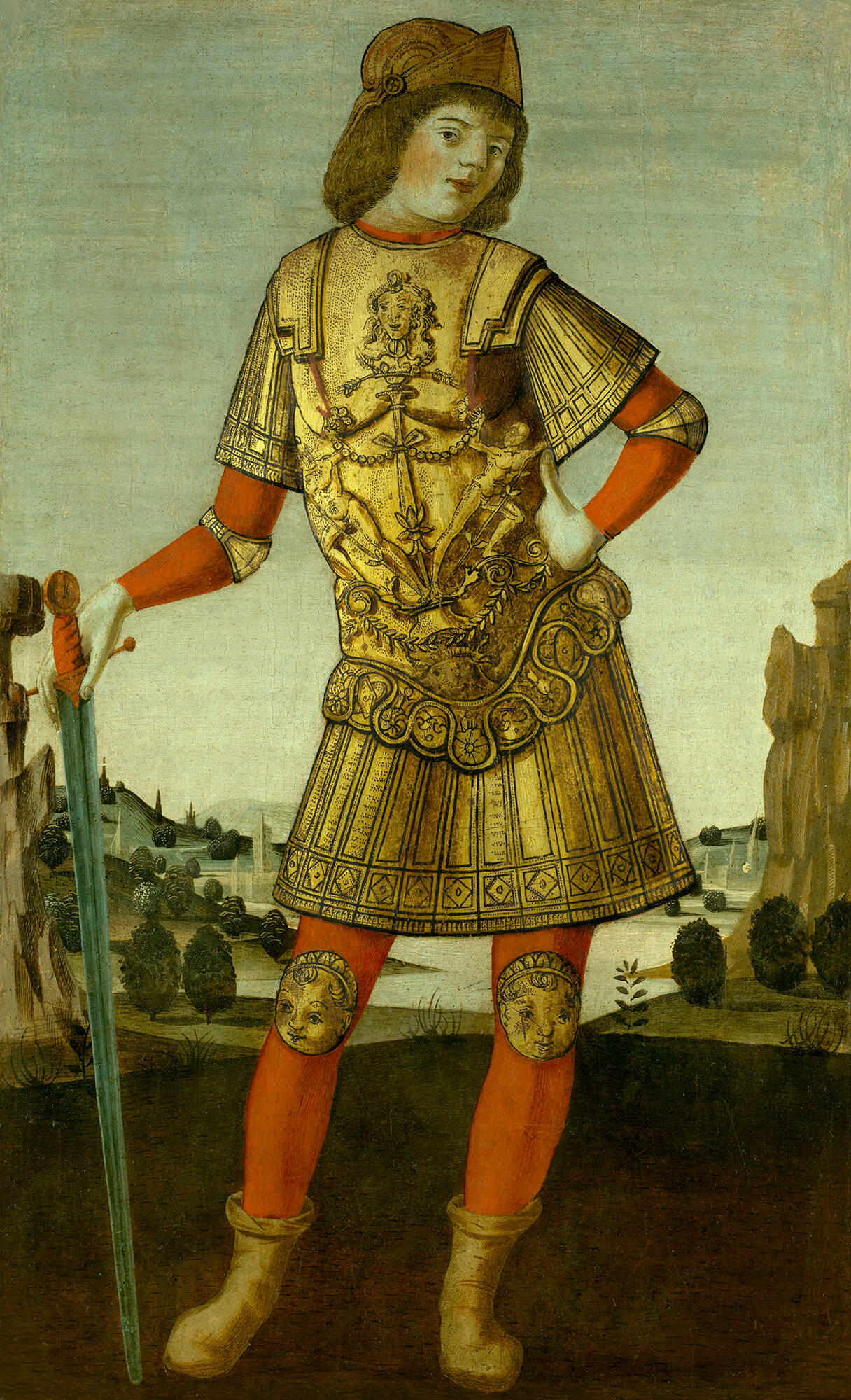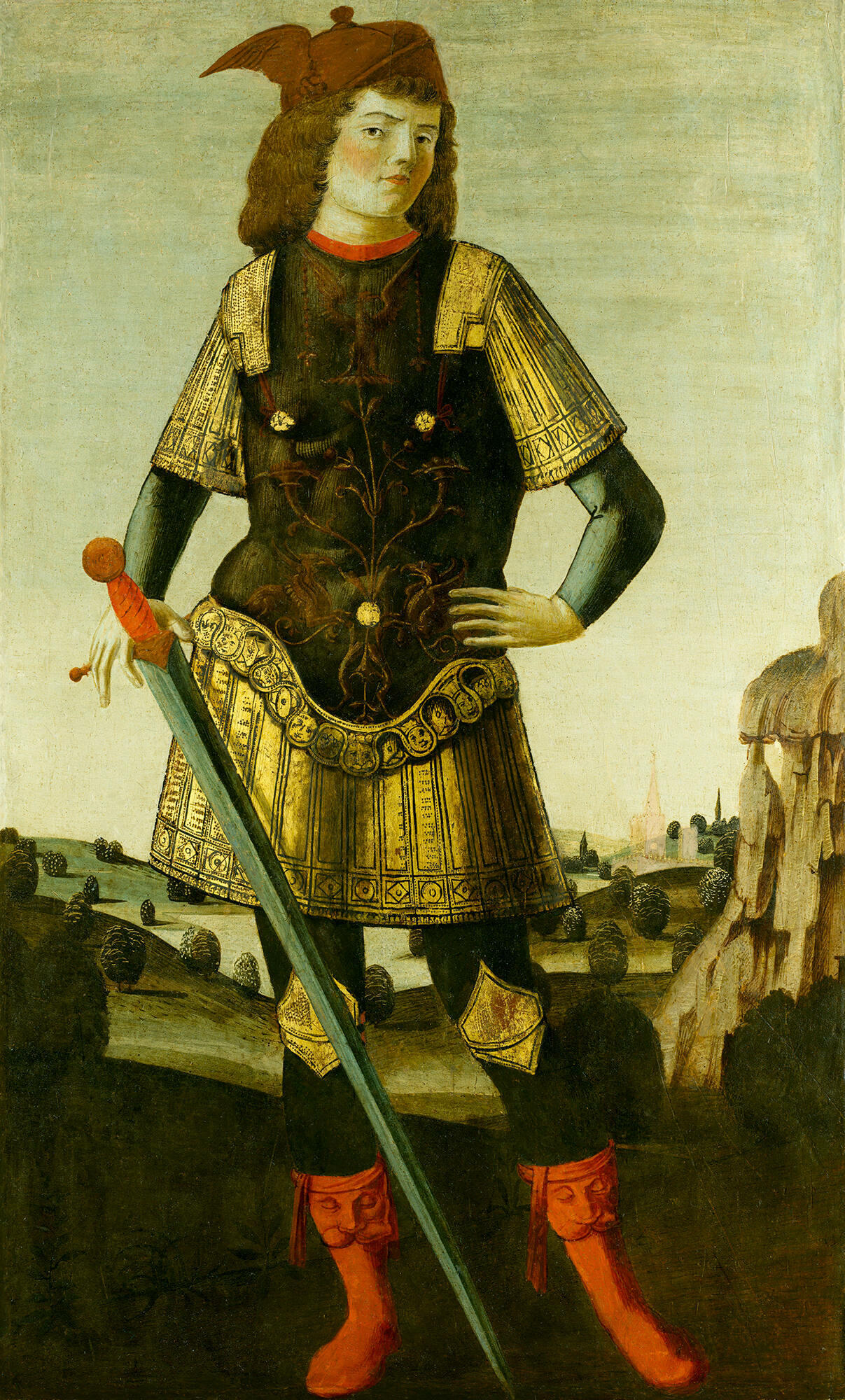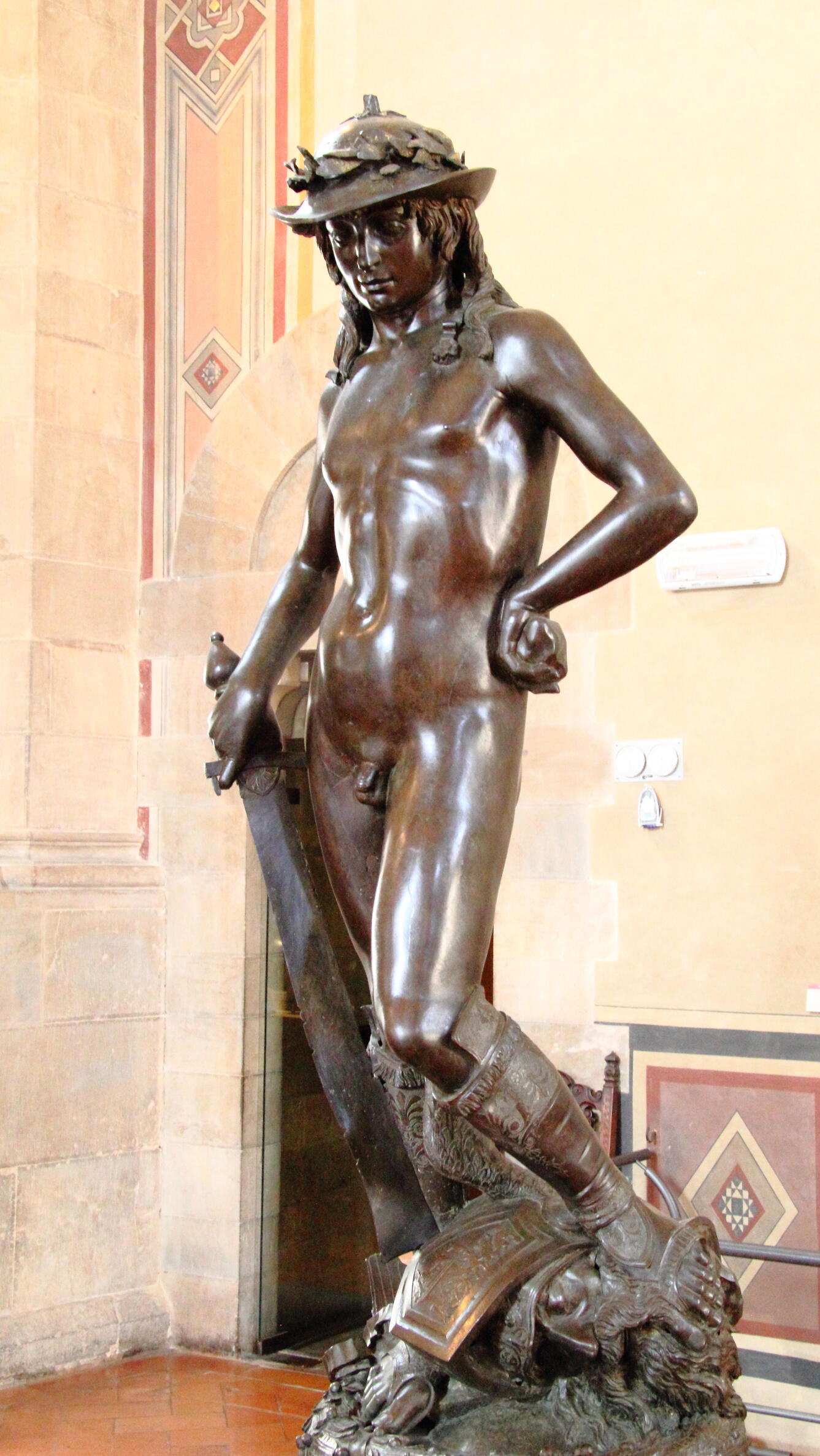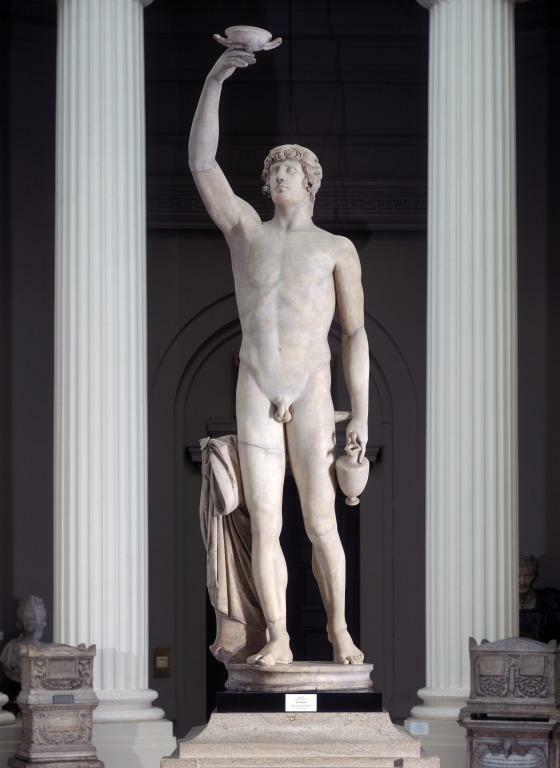Creating one's own connection to an artwork shapes our visits to museums that feel personal. Through her unique installations, Isabella Stewart Gardner created endless opportunities for our own interpretations to shine. Each gallery in her Museum contains objects in a variety of media from different time periods and cultures without traditional labels. These environments encourage close looking and finding new connections or discoveries. Today, some visitors might make personal connections to contemporary themes or subjects within the art by “Queering” the museum.
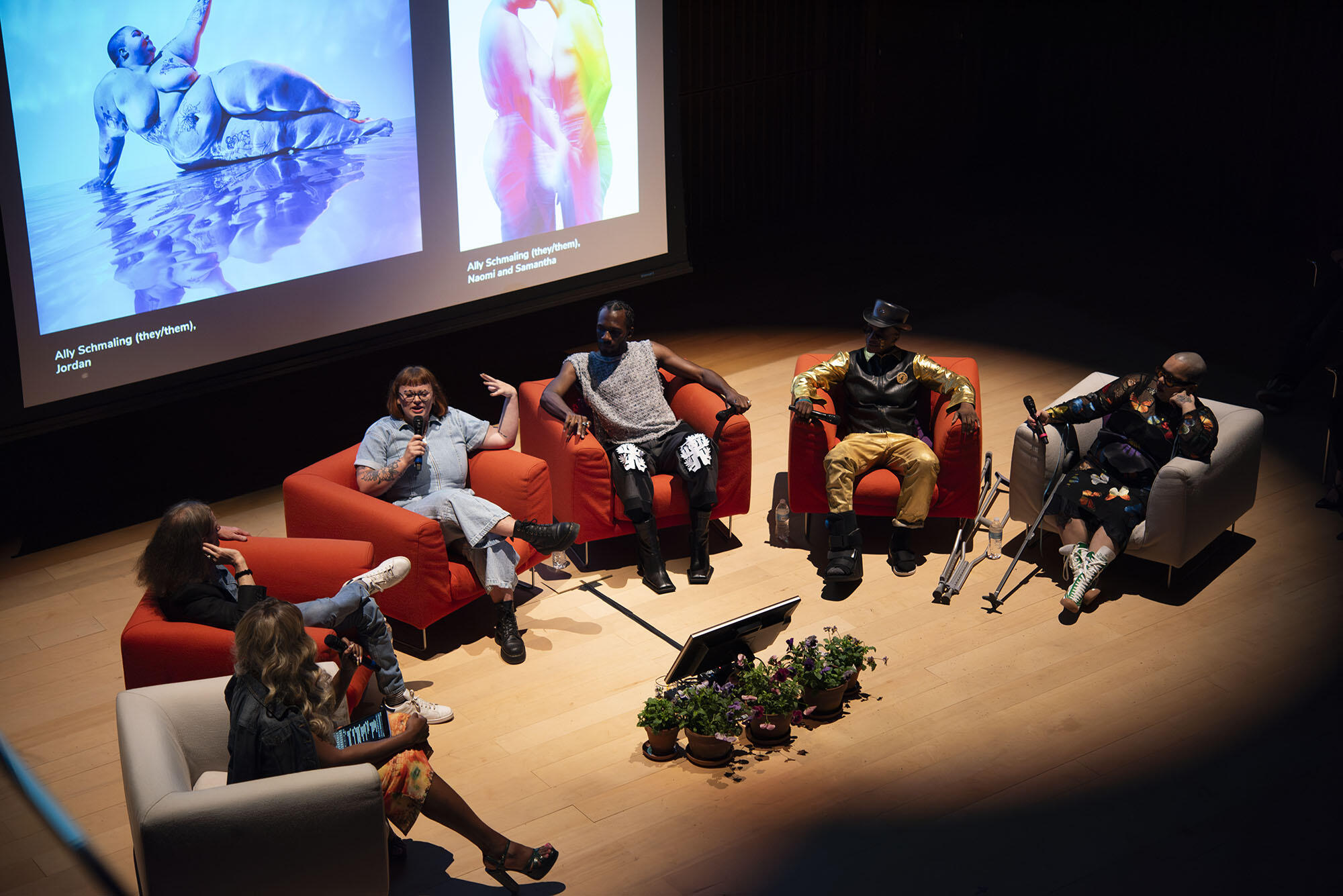
ⓒ 2024 Isabella Stewart Gardner Museum, Boston
"Beyond the Lens: Queer, Nonbinary, and Trans Liberation, Resistance, and Community" in Calderwood Hall, June 13, 2024. A conversation with exhibiting artists Mark Seliger, Olivia Slaughter, Jaypix Belmer, Ally Schmaling, and Hakeem Adewumi, moderated by Giselle Byrd, Executive Director of The Theater Offensive
What is “Queering?”
While previously a slur, queer is now an umbrella term used to describe the many gender identities and sexual orientations within the LGBTQIA+. “Queering,” or using “queer” as a verb, is described as a way to “challenge” what museums have told us.1 We can perform “interventions” that question heteronormativity and mine the collection for new meanings. But how exactly can we use this idea of “queering” to help us to better understand the history or truths that already exist and are often overlooked? Look no further than the Italian Renaissance and Greco-Roman influence abundant within Mrs. Gardner's collection. Often forgotten or unmentioned, the Italian Renaissance had a vibrant queer culture, directly influenced by the queer culture from Ancient Rome.
“Queering” the Raphael Room
The Raphael Room holds works of art from the Italian Renaissance including by painters Sandro Botticelli, Carlo Crivelli, and the room's namesake Raphael. Isabella displayed a pair of paintings depicting heroes of antiquity (P16s12 and P16s13) by Neroccio di Bartolommeo de Landi. These two figures framed in gold and separated with a larger-than-life candelabra are often overlooked or walked past. While no scholarship says that the Hero of Antiquity paintings were intentionally created to be received as queer, they feel as though they could fit right in.
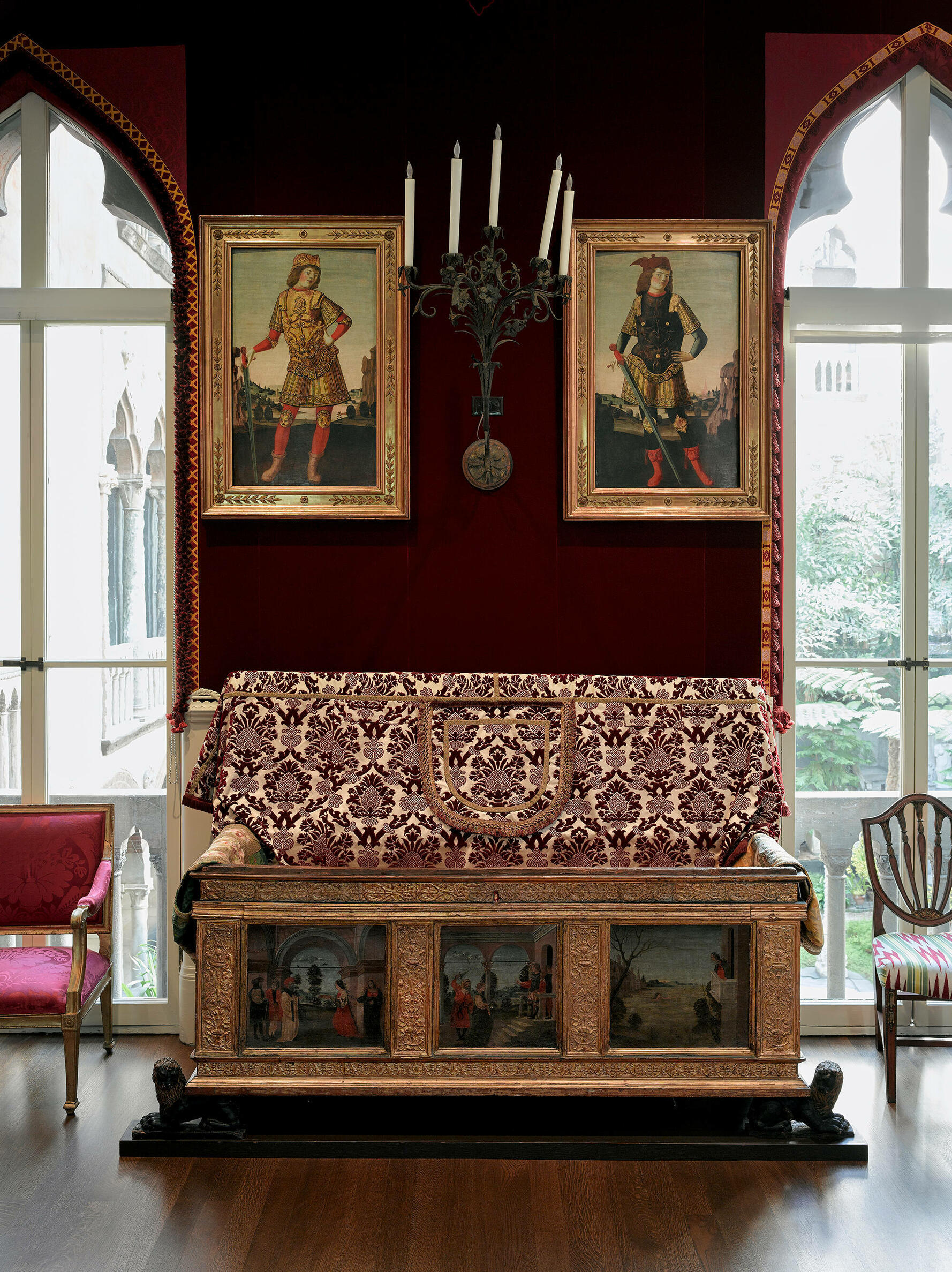
Isabella Stewart Gardner Museum, Boston. Photo: Sean Dungan
The Raphael Room, showing Neroccio de’ Landi’s Heroes of Antiquity, about 1500
What am I seeing that makes me say the Heroes of Antiquity could fit in with queer aesthetics? At first glance the figures in the paintings appear flirtatious, youthful, and passive. Their “rakish poses” and uniquely puzzling expressions seem out of character for stereotypical heroes. While the figures are titled as Heroes, there is no urgency or battle to be found in the setting of the artwork.
If we compare these paintings to another Renaissance scene in the room, Saint George Slaying the Dragon by Carlo Crivelli, we see visual similarities. In the Crivelli painting, the hero is in the act of killing the dragon. Why do our Heroes of Antiquity have no foes? We might look to the details of their presentation for more clues. Both figures are suited in gilded embellished armor, have immaculate long curls, and possess the softest pink flushed cheeks. All of these elements come together to make the figures feel less than victorious, softer in their masculinity, and like they are wearing a “hero” costume. Just as a Drag is a performance of gender using costuming, some might say these figures are serving more of a “hero antiquity realness” than a typical depiction of a mythological hero.
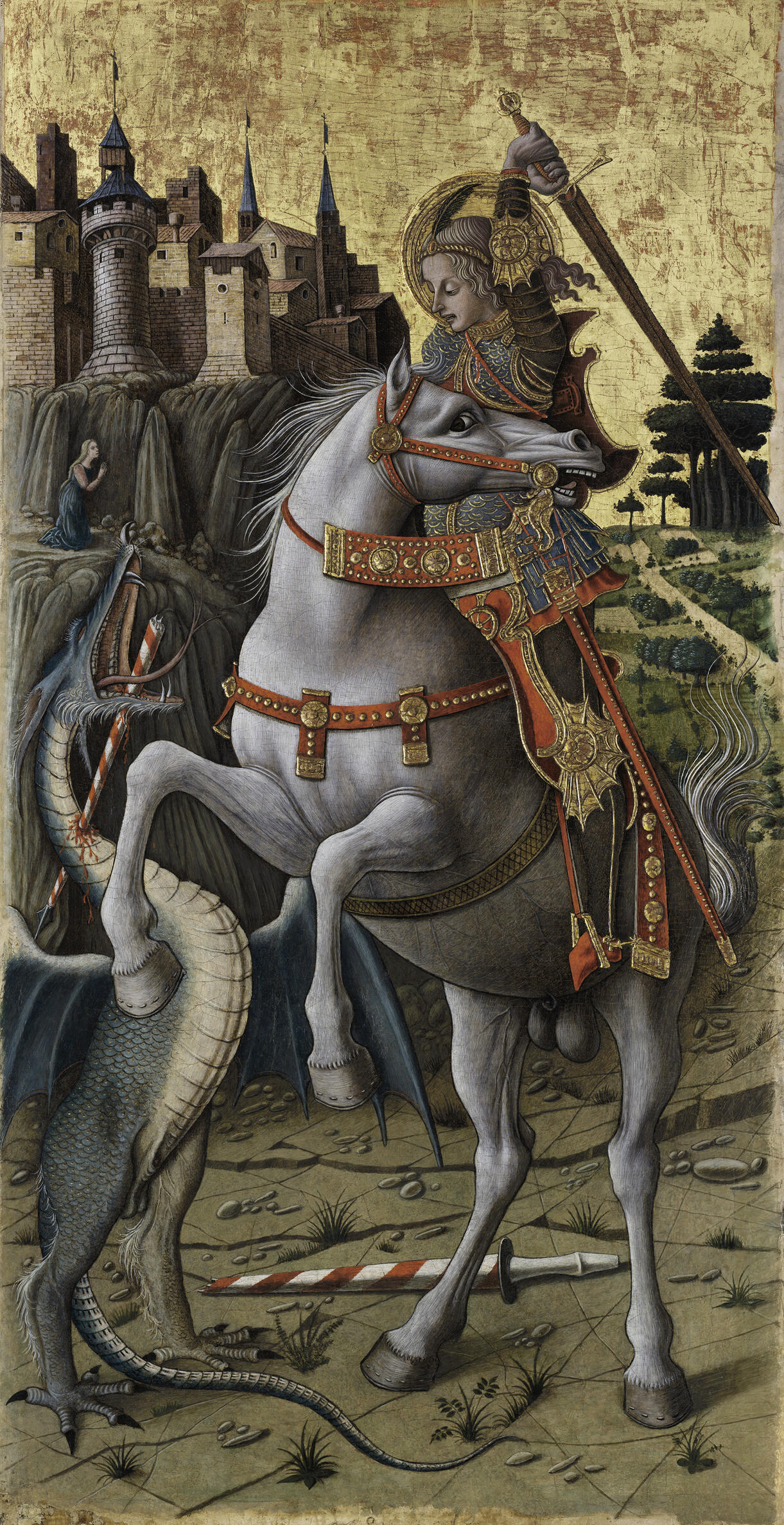
Isabella Stewart Gardner Museum, Boston (P16e13). See it in the Raphael Room.
Carlo Crivelli (Italian, about 1430-1435–before 1495), Saint George Slaying the Dragon, 1470. Gold, silver and tempera on panel, 93.9 x 48.5 cm (36 15/16 x 19 1/8 in.)
While it is impossible to know if Landi himself was queer, the rise of creating work that sexualized the youthful male in the Renaissance dated back to almost a decade before the Heroes were created. But who “walked” and “strutted that runway” so that Landi could serve?
Queer Culture in the Renaissance and Ancient Rome
Historians point to Donatello’s David (1428–1432) as an early example of a work that possibly sexualized men for male viewership. With a contrapposto stance and an androgynous features like our Hero paintings, some have interpreted this pose as “seductive.” To some fifteenth century viewers, Donatello’s young hero David represented the physical ideals of younger men, some of whom were at the time pursued by older men for the purposes of sex. Looking at examples of queerness from the past, Donatello may have even modeled the head of David after a bust of Roman emperor Hadrian’s male lover, Antinous.2
This address to a contemporary male audience was not the only Greco-Roman idea adopted by artists in Italy in the fifteenth century. In the Italian Renaissance, a time of “rebirth,” we see a renewed interest in all forms of art and writing. For example, the writing of Plato—who praised male relations and compared male love to being closer to God—regained popularity among those who could read, had leisure time, and the ability to indulge it.3 The resurgence of queer themes in the Renaissance, specifically same-sex male love, became a norm. Sex acts between men were criminalized in Florence and one victim of this legislation was the famed artist Leonardo Da Vinci.4 Landi painted the Raphael Room Heroes under these influences in Siena, Florence’s Tuscan neighbor.
Isabella’s Queer Community
While it is unknown if Isabella was familiar with the queer culture of the Italian Renaissance, we do know that she was steeped in the queer community of her time. As a regular guest of Dabsville, a group of lively, unmarried friends living on Gloucester’s Eastern Point, Isabella was an ally and friend to many out or quiet queers of her time.
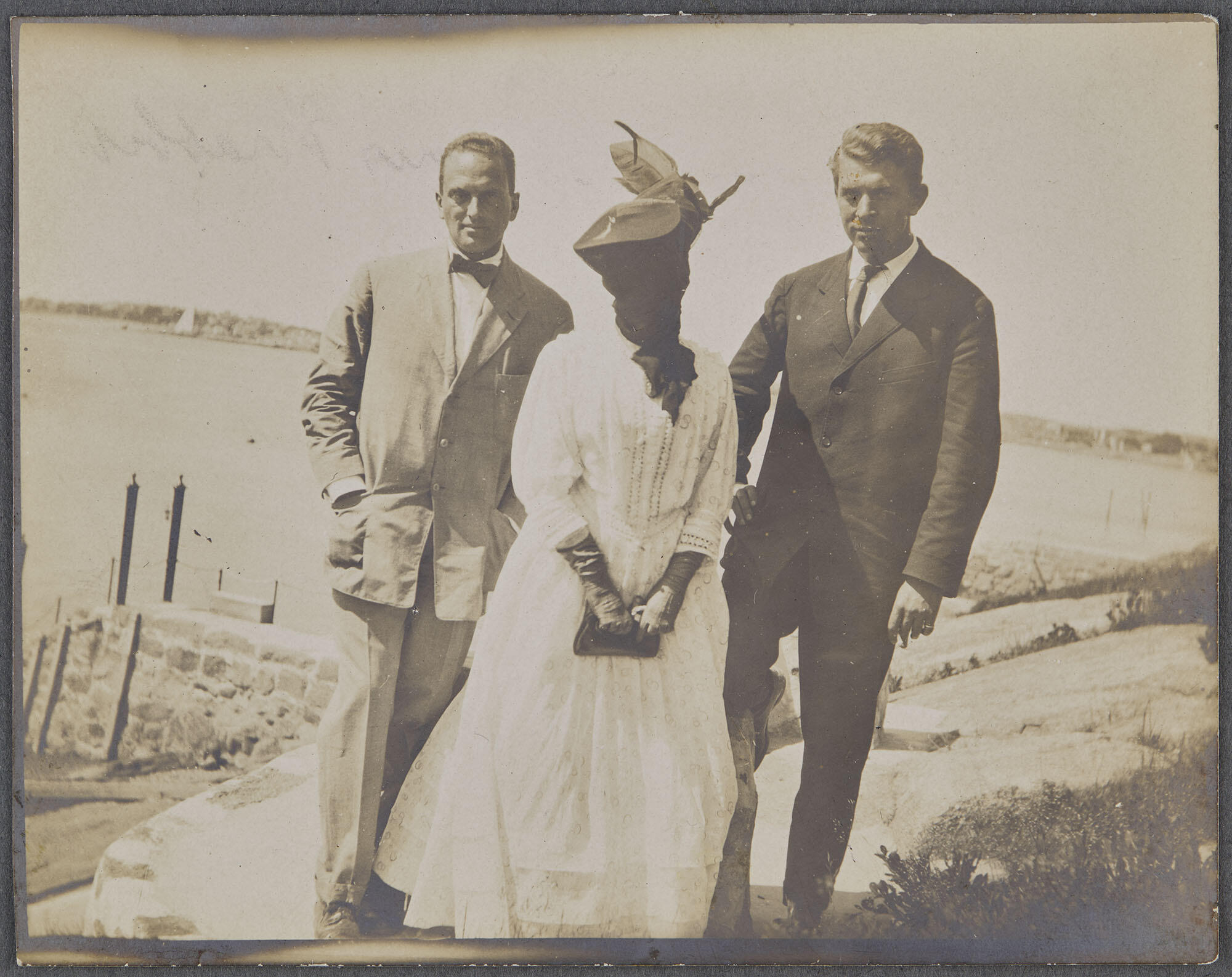
Isabella Stewart Gardner Museum, Boston (ARC.007469)
Unidentified photographer, Isabella Stewart Gardner with A.Piatt Andrew and Jack Mabbett at Red Roof, Gloucester, Massachusetts, 26 June 1908. Gelatin silver print, 8.2 x 10.3 cm (3 1/4 x 4 1/16 in.)
We find her proudly displaying works by queer artists in the galleries, getting lunch to connect with queer authors of the time, and creating deep, lasting friendships with some of history's most beloved queer icons. The Heroes of Antiquity sit in good company in the museum collection with many artists or works waiting to be “Queered” by visitors.
Further Reading
Haselswerdt, Ella, Sara H Lindheim, and Kirk Ormand. 2023. The Routledge Handbook of Classics and Queer Theory. Taylor & Francis.
Lirette, Sam . n.d. “A Queer Analysis of Botticelli’s Venus and Her Role as Pop-Cultural Icon.” Edited by Paige Suhl. Canvas Journal. Department of Art History & Communication Studies at McGill University. https://www.canvasjournal.ca/read/queer-botticelli
Mcaloon, Jonathan. 2018. “Did We Miss the Point of One of the World’s Most Famous Sculptures?” Artsy. November 8, 2018. https://www.artsy.net/article/artsy-editorial-point-one-worlds-famous-sculptures
Riley, Maura. 2022. “Prising Open the Museum .” In Queer, xvi–xxvii. Melbourne, Australia: National Gallery of Victoria. https://www.maurareilly.com/pdf/essays/2021-reilly-queer-introduction.pdf
“Why Renaissance Art Feels Undeniably Queer.” n.d. Google Arts & Culture. https://artsandculture.google.com/story/why-renaissance-art-feels-undeniably-queer-glbt-historical-society/QAXBrpm1ggel4w?hl=en
Notes
1 Riley, Maura. 2022. “Prising Open the Museum .” In Queer, xvi–xxvii. Melbourne, Australia: National Gallery of Victoria. https://www.maurareilly.com/pdf/essays/2021-reilly-queer-introduction.pdf
2 Mcaloon, Jonathan. 2018. “Did We Miss the Point of One of the World’s Most Famous Sculptures?” Artsy. November 8, 2018. https://www.artsy.net/article/artsy-editorial-point-one-worlds-famous-sculptures
3 “Why Renaissance Art Feels Undeniably Queer.” n.d. Google Arts & Culture. https://artsandculture.google.com/story/why-renaissance-art-feels-undeniably-queer-glbt-historical-society/QAXBrpm1ggel4w?hl=en
4 Lirette, Sam . n.d. “A Queer Analysis of Botticelli’s Venus and Her Role as Pop-Cultural Icon.” Edited by Paige Suhl. Canvas Journal. Department of Art History & Communication Studies at McGill University. https://www.canvasjournal.ca/read/queer-botticelli
